In my experience, tools travel better in their own traveling rolls, pouches, wraps, and sacks. Then, at anytime, they can be loaded in a canvas or leather toolmaker’s bag.
This arrangement makes me, and the tools I carry, more mobile.
From time to time, I go to workshops in and out of town. The unconventional ways that I travel, on Greyhound or Amtrak, require that my tools are protected. I always notice and acknowledge how other woodworkers transport their tools. Some modes of travel can make carrying a large toolbox or chest cumbersome.
I could wrap them in clean newsprint and call it a day. However, I like to have my toolkit look a bit more professional. So, I jazz it up with leather, canvas, and paperboard tool holders of all kinds! And I can do that because in one of my other lives, I am a seamstress.
This is just another thing that I do in the shop when I am not actively woodworking. As I have pointed out a few times, woodworking, for me, is half the time woodworking and half the time getting ready for woodworking. That latter half includes ensuring that my tools are in good working order and doing what I need to feel good in the shop.
A woodworking and sewing medley
Leather chisel tool rolls
Tool rolls for chisels are important. If anything is going to be protected above any other tool, it’s chisels. Edge tools, prepped and sharpened beforehand, are susceptible to damage in transit. If the damage is severe, the issue cannot be addressed sufficiently in a class or workshop. It takes some time and you usually don’t have it. And you did not pay to sit in a class to sharpen your tools.
Occasionally, an instructor may help you with a bit of impromptu, reparative sharpening, but that is one expensive sharpening session!
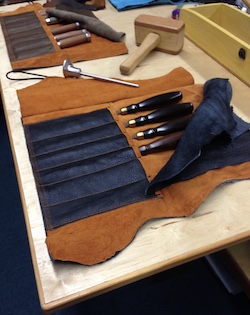
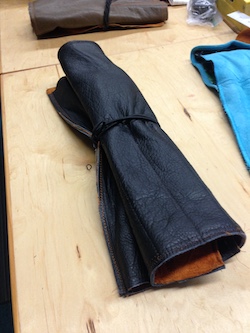
Canvas bench plane tool pouches
The weight of hand planes is a lot to manage. Drop one of those on a hard surface; you’ll find it to be a devastating thing. The tool’s workings could be knocked askew and never be the same.
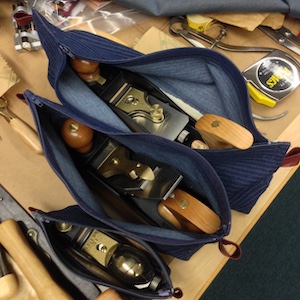
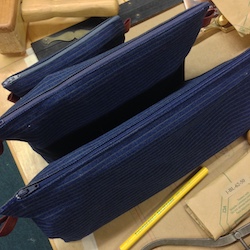
Heavy board hand saw envelopes
Saw teeth are covered in order to protect the saw and, me, the user.
I drafted “envelopes” from heavyweight acid-free artist boards to fit each size saw.
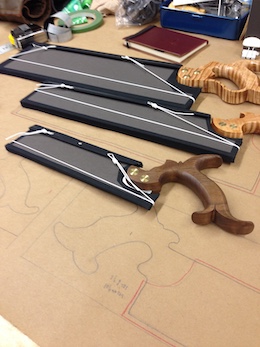
Leather drawknife sheaths
Drawknife blades are prime candidates for protection. The curves and unusual shapes of the tools plus the heavy handles make them somewhat unwieldy. An uncontrolled drawknife, especially one grasped by only one of the handles, can quickly swing around and cut flesh.
The leather sheaths are wet molded to the blade shape. Rivets help preserve the shape of the leather and create boundaries for the blade. Snaps complete the look in addition to providing fast access to the tool.
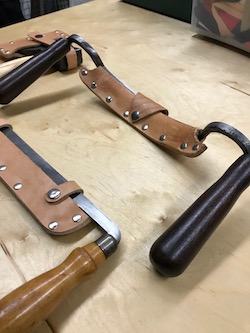
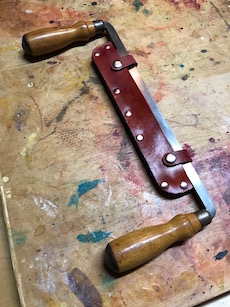
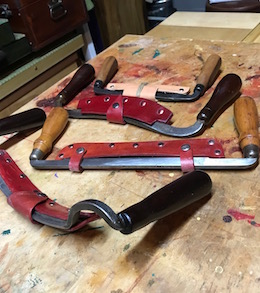
Leather plane blade tool pouches
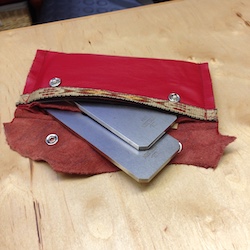
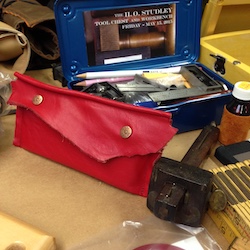
Canvas Japanese saw wraps
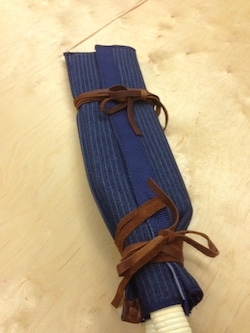
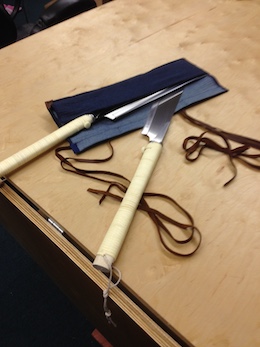
Caliper cases
When found at flea markets, these cases can be in bad shape. In addition to the tattered lining, a moldy smell that has incubated for a long time wafts from the case when opened.
My experience in refurbishing many old Singer featherweight sewing machines and cases helps me to quickly identify and fix the problem.
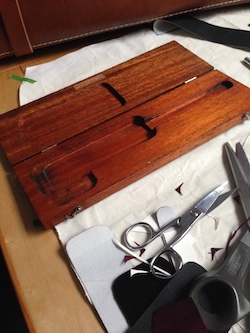
Most times, just removing the lining eliminates the moldy smell.
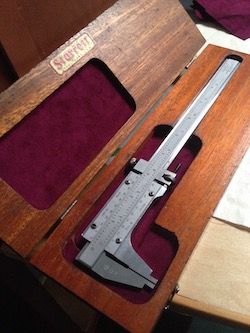
Beading plane/spokeshave tool pouches
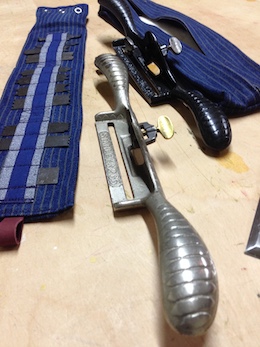
Leather and canvas small accessory tool sacks
These little sacks help to keep track of caps, little screws and other accessories for bigger tools when I am in workshops or on the road.
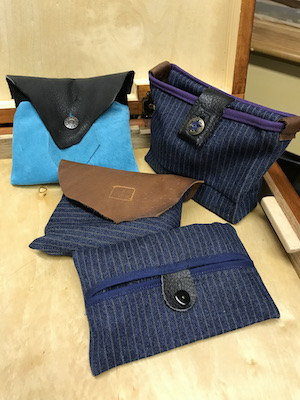
All tool pouches are custom made in the shop. I make them to fit each tool which includes appropriate padding and protection. Lastly, I insert rust inhibitor paper, strips or disks in each holder or bag.
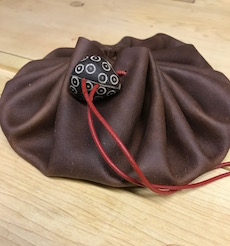
Regardless of form, any tool holder can be used as shop storage during workshop or traveling season. A quick clean and check of the tools should uncover flash rust or any other potential damage caused by storing them this way. I have not had a problem. It may help that my wood shop is not in a high humidity zone!
When working in class, I place a pouch on my workbench and work right out of it!
That’s a quick look at just a few of the ways that I care for and protect my tools when I am out of the shop.
I am always interested in the creative ways other woodworkers transport their tools. Do you have an unconventional way that you transport yours?
There is more!
Fixed storage such as boxes, cabinets, and shelves are vital in the shop to keep out dust and rust. Importantly, they are used to protect and secure my tools.
I’ll talk about that in a later post.
Baadaye.
-💜Shirley J

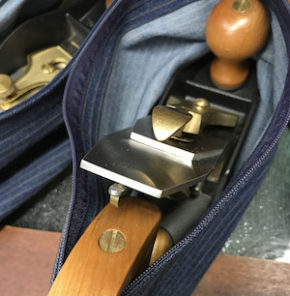
2 thoughts on “● Rolls, Pouches, Wraps, and Sacks”
I love your attention to detail. I've noticed something universal about good woodworkers. We all are somewhat "ocd" about our tools and shop. All these are very good ways to protect the quality tools we've purchased. I really like the back saw guards you designed and made. Thanks for such a lovely blog on a subject that's dear to my heart!
You are right. Taking care of your tools helps you get good results in your work. Thank you for reading!